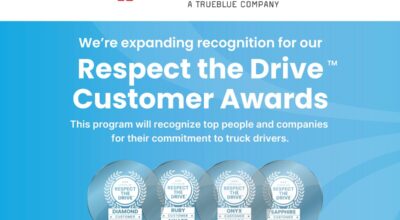
Trucks can become stationary due to a variety of reasons. Sometimes they break down and need to be fixed before they’re able to return to the road. Or you may not have someone available to operate the truck as a result of the current driver shortage.
Regardless of the reason, having a truck that doesn’t leave your yard or facility can impact your company in a number of different ways. What are the true costs of a sitting truck?
Decreased revenue
You can have the most efficient manufacturing process in the world but if you aren’t able to deliver the items you make, this doesn’t matter. You can’t complete the revenue chain. This makes the delivery of your goods just as important to the financial health of your company as creating efficient operational processes.
Freight Waves reports that the average truck brings in revenues somewhere between $2,800 and $5,000 per week depending on the truck type (refrigerated, flatbed, etc.). Therefore, if you have a truck that sits for any length of time, or you have many trucks out of commission, this can really eat into your bottom line.
Missed delivery deadlines
Not only does a sitting truck mean less money coming into your company but it also means an increased risk of missing your delivery deadlines. Logistically, you can’t expect to continue to deliver the same amount if your method of delivery—a.k.a. the number of trucks you have on the road—has been reduced.
When your customers aren’t getting their goods in a timely manner, your relationship with them can take a major hit. Depending on how often this is an issue, the damage could eventually reach a point where it is beyond repair. Once this occurs, you’ve likely lost them for good.
Lower service quality
If you are a service-based business, having an inoperable or unmanned truck equates to lower service quality. You may not be able to respond to your customers as quickly as you’d like.
This one factor alone can cause your customer to seek out your competitor instead. Even if your competition doesn’t offer the same level of expertise or have competitive pricing, the customer may decide that a quicker response is worth sacrificing in one or both of these areas.
Reduced productivity
It goes without saying that for every hour or every day your truck isn’t on the road, your company’s productivity declines. You aren’t able to move as many goods or handle as many service calls as you could with a fully operational fleet. It simply isn’t possible.
This reduced productivity in equipment may cause you to push your employees harder in an attempt to make up for some of the loss. While this type of approach may be understandable, increasing the productivity in one area to make up for the loss in another, it can actually have the opposite effect. Pushing employees too hard increases their risk of burnout, reducing your company’s productivity even more.
Limiting the impact of a sitting truck
Conducting regular maintenance on your truck fleet can help reduce the risk of mechanical issues large enough to interrupt your delivery processes. Catching problems before they start or fixing them when they are relatively minor is also typically less costly than waiting until a truck breaks down before instituting some type of repair.
If your sitting truck is due to not having enough drivers, Centerline can help. We have a variety of staffing solutions available, enabling you to pick the one that best suits your company and its driver-related needs.
Dive deeper into the true cost of a sitting truck with this infographic or contact us today to learn more about how we can help you get all of your trucks on the road, reducing your costs in all of these areas.


